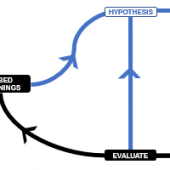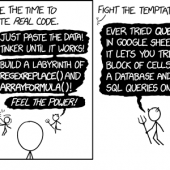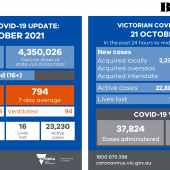Something was still bugging me even after yesterday’s write up. There is an underlying question I wasn’t aware of asking, which was addressed in the first few sentences of this article: Why transforming an organisation is difficult: resources, processes, values and the migration of skills; i.e.:
Part of the answer lies in the observation that over time, what an organisation knows how to do migrates: its capacity lies initially in its resources (especially human), then it evolves to processes and finally to values.
– Philippe Silberzahn
The “How will you measure your life?” book introduced the RPV framework, but it did not talk about the RPV model of migration or the implication of the progression. The above insightful article really did provide much food for thought in terms of building data capabilities in organisation which do not have data driven as it’s values. Excerpting it’s key relevant paragraphs below for further ponderings.
Indeed, while these processes and these values define what the organisation can do, they also, by definition, define what the organisation cannot do: if it is optimised for an environment, then by definition it is not optimised for another environment.
…
But when, at a later stage, an organisation’s abilities reside in its processes, and even more so when they reside in its values, change becomes extremely difficult.
…
Change requires the questioning of assumptions and values that have made the success of the organisation sometimes for decades in its current business. If this legacy activity is still healthy, it will be difficult to admit the need to question them, even if the perception of the danger exists, and it will be even more difficult because these values are shared by thousands of employees who see every day their beneficial effects.
…
As a result of this difficulty, one may be tempted to give up the titanic task of changing the values of an organisation, especially since this change undermines the legacy activity long before it allows, possibly, the birth of a new one.
…
Only a work on the core values and assumptions of the organisation – its mental model – will bring about necessary changes in the face of a disruption.
– Philippe Silberzahn
How shall we go about working on the core values and assumptions of the organisation to progress the data capabilities from Resources to Processes?
Clayton seems to have the answer for this too…
Managers whose organizations are confronting change must first determine that they have the resources required to succeed. They then need to ask a separate question: does the organization have the processes and values to succeed? Asking this second question is not as instinctive for most managers because the processes by which work is done and the values by which employees make their decisions have served them well. What I hope this framework adds to managers’ thinking, however, is that the very capabilities of their organizations also define their disabilities. A little time spent soul-searching for honest answers to this issue will pay off handsomely. Are the processes by which work habitually gets done in the organization appropriate for this new problem? And will the values of the organization cause this initiative to get high priority, or to languish?
If the answer to these questions is no, it’s okay. Understanding problems is the most crucial step in solving them. Wishful thinking about this issue can set teams charged with developing and implementing an innovation on a course fraught with roadblocks, second-guessing, and frustration. The reasons why innovation often seems to be so difficult for established firms is that they employ highly capable people, and then set them to work within processes and values that weren’t designed to facilitate success with the task at hand. Ensuring that capable people are ensconced in capable organizations is a major management responsibility in an age such as ours, when the ability to cope with accelerating change has become so critical.
– Clayton M. Christensen (Chapter 8 of The Innovator’s Dilemma)





